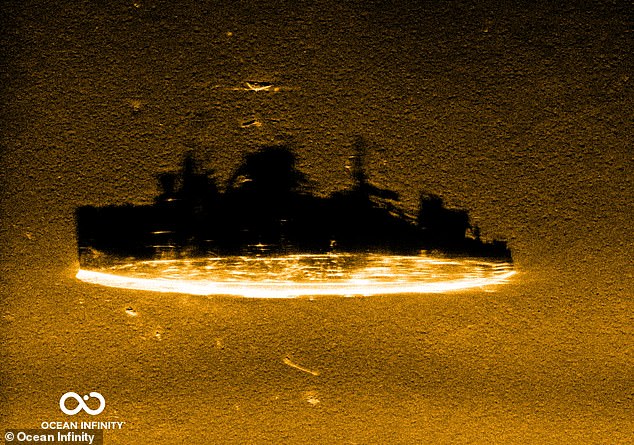The remains of the ‘Pacific Ghost Ship’ have been found at the bottom of the California ocean, eight decades after its historic role in World War II.
The wreckage of the ‘Pacific Ghost Ship’, found nearly 3,500 feet below the water’s surface, was discovered using powerful robotic sonar technology after 82 years.
The 314-foot-long ship was identified as the only U.S. Navy destroyer captured by Japanese forces during World War II, known as DD-224 or USS Stewart.
Another group of drones managed to capture images of the wreck days later and found it upright and “almost perfectly intact,” the New York Times reported.
The level of conservation is “exceptional” for a ship of its age, according to the superintendent of the Cordell Bank and Greater Farallones national underwater sanctuaries.
“(This) potentially makes it one of the best-preserved examples of a US Navy ‘four-piper’ destroyer known to exist,” he continued.
The remains of the ‘Pacific Ghost Ship’, found nearly 3,500 feet below the water’s surface, were discovered thanks to powerful robotic sonar technology after 82 years.
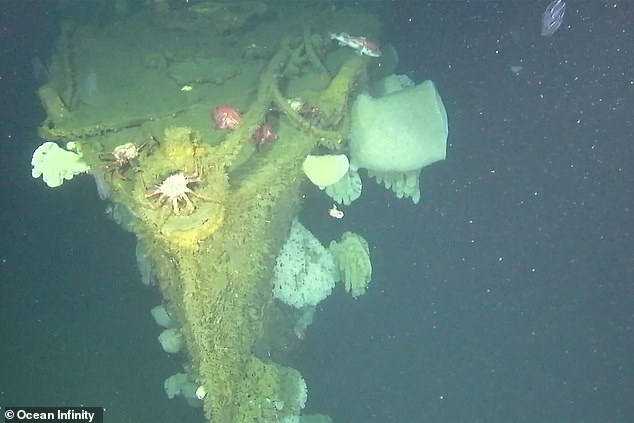
The wreckage of DD-224 was said to have been found in near-perfect condition, potentially making it one of the first of its kind to be so well preserved.
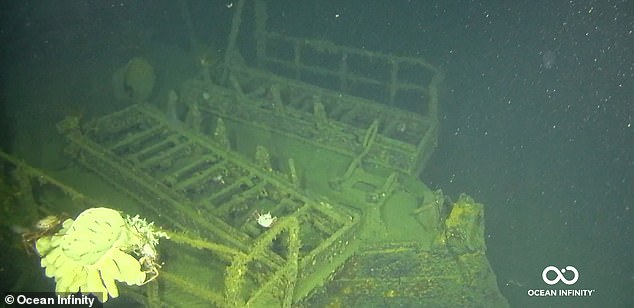
The 314-foot-long ship was identified as the only U.S. Navy destroyer captured by Japanese forces during World War II.
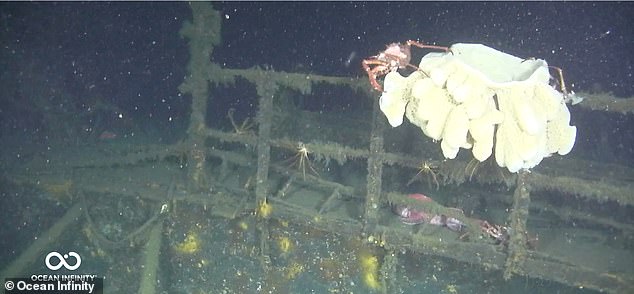
The ‘Ghost Ship’ was known as DD-224 or USS Stewart.
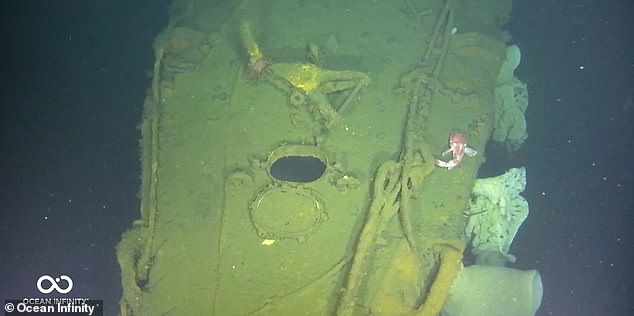
Russ Matthews said: “The whole history of that ship was actually exceptionally well documented. The only part of that history we didn’t have is: what does it look like today?”
The drones used to locate the historic shipwreck have become a valuable asset for researching the history of our oceans.
In 2018, Ocean Infinity developed and deployed the largest fleet of marine robotics to collect underwater data.
“Using the latest remote and robotics technology, we provide scientists and research institutions with vast amounts of data to help them make important decisions and help them understand the changing ocean landscape,” Ocean Infinity wrote.
The company also helped find the wreckage of the USS Nevada in 2020, which escaped from Battleship Row at Pearl Harbor in 1941 and was one of the U.S. Navy’s longest-serving battleships.
The orange, torpedo-shaped drones collect high-resolution data using sonar that creates high-resolution maps of the seafloor. The same technology is used for projects such as wind farms, oil platforms or laying underwater cables and pipelines.
Senior Vice President Jim Delgado of SEARCH Inc, the world’s leading organization for maritime archaeology, told the New York Times: “I think we’re in the midst of a sea change in ocean discovery.
Delgado was part of the search for DD-224 for a decade as director of maritime heritage for the National Oceanic and Atmospheric Administration, which oversees more than 620,000 square miles of underwater parks in the United States.
The company’s research to understand and predict changes in weather, climate, oceans and coasts is part of its effort to educate, conserve and manage coastal and marine ecosystems and resources.
Russ Matthews, president of the nonprofit Air/Sea Heritage Foundation and a member of the discovery team, told the New York Times: “Actually, the entire history of that ship was exceptionally well documented. The only part of that story we didn’t have is: what does it look like today?
Matthews and Sherell, Ocean Infinity’s director of maritime operations, collaborated to test larger autonomous drones to locate DD-224.
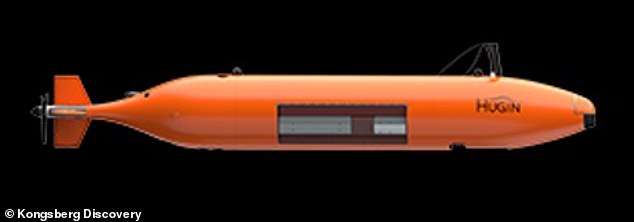
The orange, torpedo-shaped drones collect high-resolution data using sonar that creates high-resolution maps of the seabed.
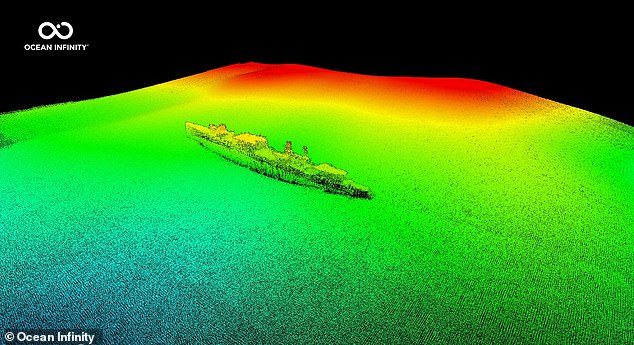
The data collected by Ocean Infinity is now the best map of that part of the Cordell Bank sanctuary.
Sherrell said mapping a 37-square-nautical-mile region, which was DD-224’s search area, normally takes weeks, but with drones the ship was detected in a matter of hours.
Now, the data collected by Ocean Infinity constitutes the best map of that part of the Cordell Bank sanctuary.
The Stewart received two battle stars for her service in World War II. It began when she joined the Atlantic Destroyer Squadron in 1921, where she was sent to the Philippines for a 23-year mission.
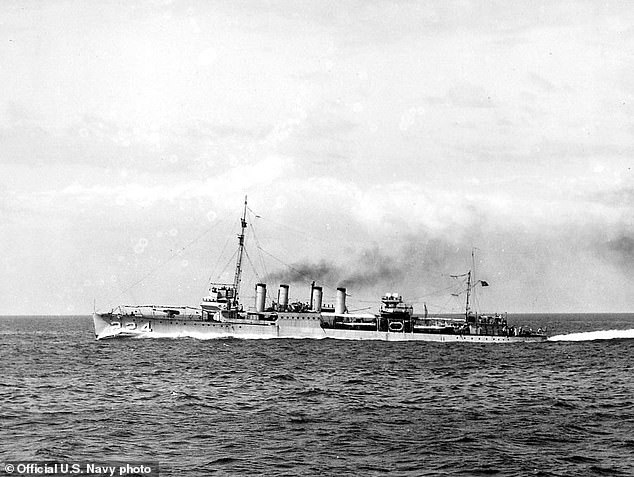
In October 1945, the US Navy recommissioned the Stewart and nicknamed her ‘RAMP-224’ before her engines failed and she sank off San Francisco.
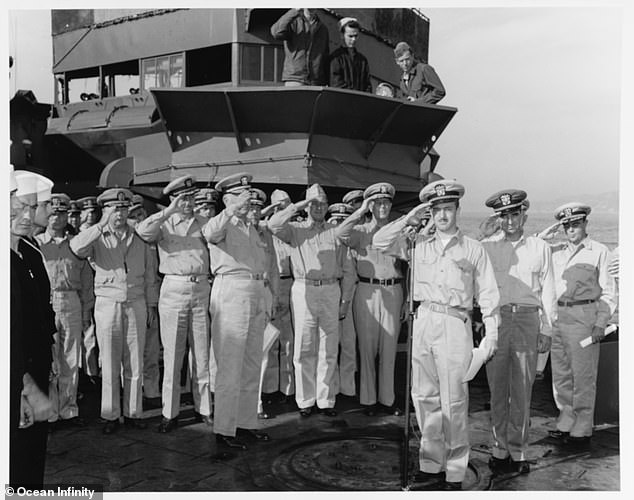
USS Stewart began life when she joined Destroyer Squadron, Atlantic, in 1921, and received two battle stars for her service in World War II.
When war broke out in 1937 between Japan and China, Stewart was stationed in Chinese ports before World War II brought her back to the Philippines.
She was the lead ship of the second group against the Japanese forces and was the subject of several fierce night attacks.
Stewart suffered damage to the torpedo racks and galley, as well as a shot below the waterline that flooded the engine room with two feet of water.
Despite being able to continue operating, she was severely damaged and lacked sufficient support at the Surabaya floating dry dock where she was berthed during repairs. As the dock was raised, it fell on its side into 12 feet of water, causing further damage to the hull and propeller shafts.
A Japanese bomb caused even more damage before the ship’s port was finally evacuated.
Later in the war, reports came of an American warship operating in enemy waters after Japanese forces repaired the Stewart in 1943 until reaching Kure in 1944.
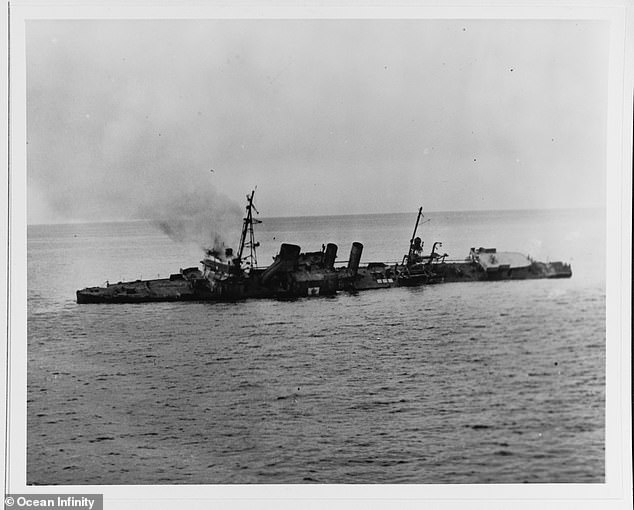
She was the lead ship of the second group against the Japanese forces and came under several fierce attacks during the night.
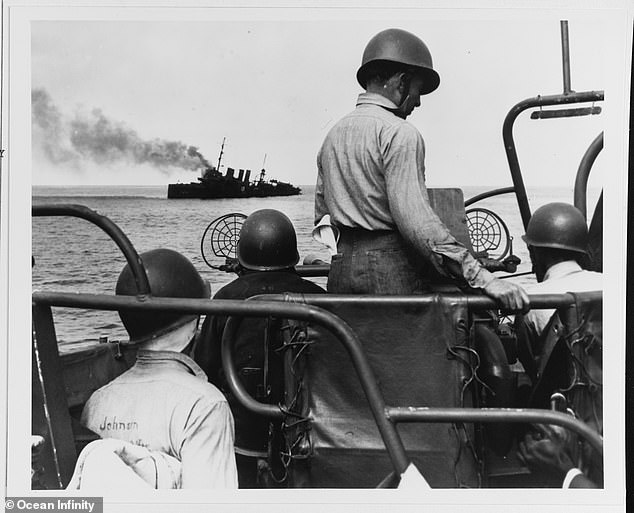
Stewart suffered damage to her torpedo racks and galley, as well as a shot below the waterline that flooded the engine room under two feet of water while she was still running.
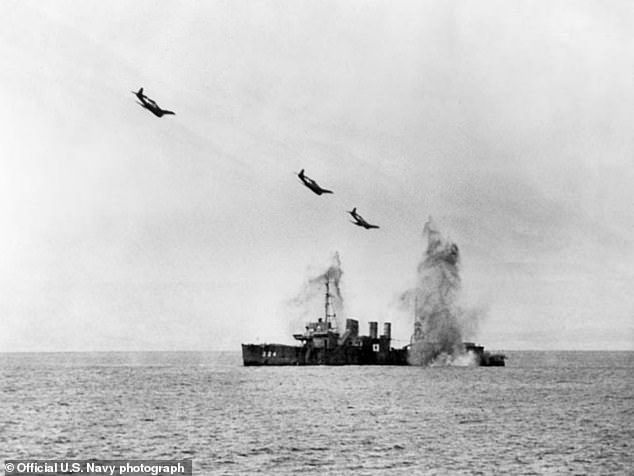
After suffering extensive damage, the Stewart was docked in a floating dry dock where she capsized overboard and was repaired by Japanese forces and was being used in enemy waters.
In April 1945, it was bombed and damaged by American forces and was finally found again in August of the same year.
In October 1945, the ship was recommissioned by the US Navy at Kure and nicknamed ‘RAMP-224’ for ‘Recovered Allied Military Personnel’ before its engines failed near Guam.
She was decommissioned in May 1946 and sunk off San Francisco as an aircraft target after two hours of gunfire.
Dr. Delgado said: ‘This ship, in its own way, was basically humanized by the Navy. People invest a lot in boats, and we have since the beginning of time. They represent us.’


